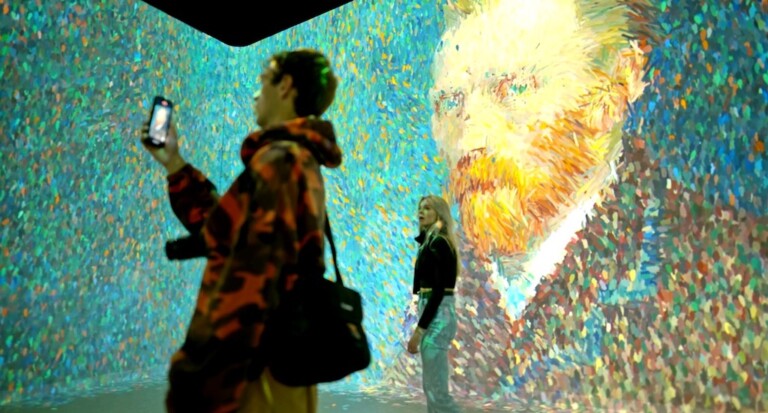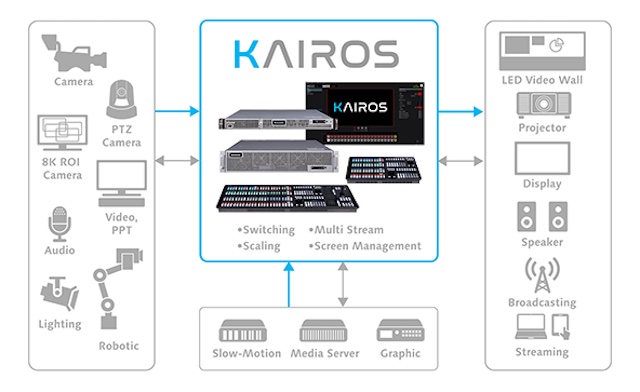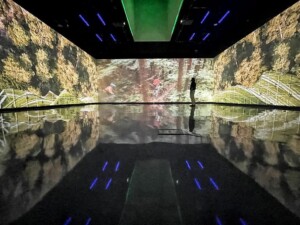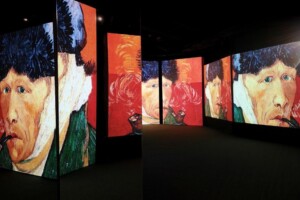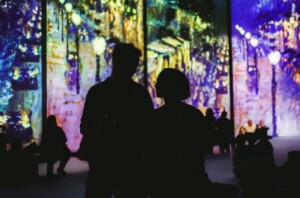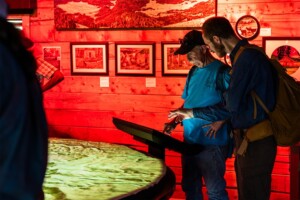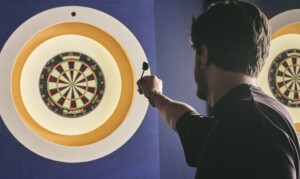In part one of this feature about creating hybrid experiences with a Glass-to-Glass (G2G) solution, I explained how the tech could increase your reach, ROI, profitability, efficiency, and marketing value.
G2G solutions can also support IDEA (Inclusion, Diversity, Equity, and Access) by opening up participation to a global audience. Meanwhile, novel technologies leveraging G2G have inspired a new breed of personalized attractions that are worth checking out in detail.
Glass-to-glass solutions increase not only marketing value but also provide new revenue channels to explore through pay-per-view, subscriptions, advertising, and sponsorships.
As a result, demand is rising for a seamless, holistic IP-based system of compatible cameras, switchers, and projectors supplied and installed by one tech partner to help streamline workflow processes and improve efficiency through the reduction of labor, installation, and operating costs.
However, with technology evolving so rapidly, operators are faced with a bewildering choice of devices, platforms, and capabilities. They are often left wondering how the investment will ultimately translate into growth. Here in part 2, I want to show you how the next generation of cameras, switchers, and projectors is simplifying the production of hybrid experiences and delivering high ROI for forward-thinking businesses.
Taking the first steps with Glass-to-Glass tech
There’s more to G2G than slapping a camera on the wall and uploading the footage to Twitch. Engaging a tech partner who can discuss your goals, site, and needs and then supply and install the system with ongoing O&M support is the wisest course of action.
Your tech partner will work with you to design a bespoke system that harmonizes with your AVoIP preference, smoothing out and even automating the workflow. Panasonic Connect’s G2G solution, for example, is highly customizable. It consists of devices designed from scratch to work with each other. They’re configurable to the specific needs of any production, helping professionals share experiences on-site and online.
Several innovations have expanded application possibilities for G2G solutions and made the investment more accessible to enterprises of any scale. Let’s take a closer look.
PTZ cameras
PTZ (Pan-Tilt-Zoom) cameras are designed to capture high-quality footage from a variety of angles and perspectives. If you watched any of the swimming events at Tokyo 2020, you’ve already seen the overhead footage shot by these cameras.
They can be set up to capture a fixed area, track motion via a remote operator, or be used with sensors to track subjects automatically. There’s even a robotic arm available. They’re ideal for live events since they are unobtrusive, with no need for a human operator behind the lens. In addition, they are small enough to mount almost anywhere.
The dominance of PTZ in broadcasting, sports, and live events production is catching on in other industries. Mainly as new products such as the AW-UE160 are released. This 4K integrated camera combines PTZ flexibility with system camera functionality and is the first of its kind to support SMPTE ST 2110 via a licensed software option. Furthermore, this model enables 4K video to be wirelessly transmitted on the spot by connecting a 5G mobile router via USB. It’s possible to broadcast events and live streams from locations where it’s difficult to run cables.
IT/IP Platform KAIROS
You’ll need a switcher, processor, and encoder between the camera and display end-points to prepare your footage for broadcast or display after production effects are added. But what if you could do it all with one device?
KAIROS is a software-based IT/IP platform that can reduce the complexity, labor, and cost of live production. It does the work of several devices by capitalizing on its powerful GPU, enabling editing, processing, mixing, and distribution to displays in real time. Users can also operate and monitor it remotely, reducing the need for an operator on site.
Users can essentially produce their program in advance, thanks to these capabilities. Plus, they can operate the system with a single button-take. This reduces the need for labor and the complexity of your system at the same time.
Laser projection
To deliver high-quality visuals at scale, the most flexible option is projection. The perfect projection tech for a Glass-to-Glass solution is easy to describe but difficult to engineer. It should deliver bright, high-contrast images yet be small and light enough to transport, carry, and install in confined spaces. Once set up, it should operate efficiently without maintenance, excessive image degradation, or periodic calibration.
Products such as the RQ25K, the world’s smallest 20,000 lm 3DLP projector, have 4K resolution and an Intel SDM-compatible slot to support your choice of AVoIP standard. If you need an even smaller 1DLP solution with up to 12,000 lm brightness, the REQ12 Series 4K projector is also Intel SDM-compatible. Both have sealed optical engines for sustainable long-term operation in tough commercial environments.
Current tech trends in Glass-to-Glass
The game industry is worth more in revenue each year than the film and music businesses combined. Therefore, perhaps the popularity of eSports events is unsurprising. Millions of fans attend tournaments in person and online to see their favorite teams battle it out on giant projector screens and video walls. The action is also simulcast online at high resolution.
These events have grown up in the streaming era. So, their high production values are inspiring others in the industry to explore what’s possible. With fast-paced editing and exciting camera angles displayed smoothly at large sizes, spectators feel they are part of the action. This helps them to become involved with the atmosphere. PTZ cameras are taking the lead in this field, wowing audiences with never-before-seen perspectives.
Our high-end PTZ cameras are Free-D-compatible, working with most graphics engines to enable live XR shooting without a tracker. This reduces system complexity and potentially the cost of production. With the software update for SMPTE ST 2110 enabled, selected PTZ models can be used as a prompter for return images (where the performer checks the steaming video on the spot). This allows for adjustment when performing chroma-key compositing or when linking with XR systems.
Applications such as these are providing attraction and game designers with a blueprint for creating a new breed of interactive experiences using cameras and projection with the footage easily shared online.
These portals—whether to the attraction itself or to interactive galleries and museums—are accessible to everyone. Shareability is an important consideration when creating an experience. Now, evolving projector technology is making it possible for smartphones to capture the sensory atmosphere with little loss in quality.
In the final part of this series, I’ll highlight some Glass-to-Glass tech and solutions currently in use around the world. In the meantime, if you’d like to find out more about how our G2G solution can help bring your experience to life, click here. Or, you can contact me via email.
